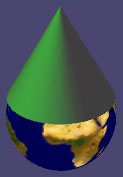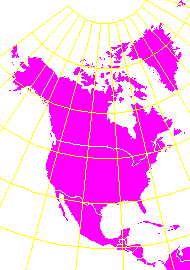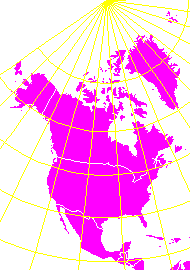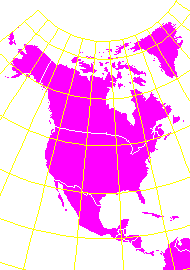 | In the conic projection the graticule is projected onto a cone tangent, or secant, to the globe along any small circle (usually a mid-latitude parallel). In the normal aspect (which is oblique for conic projections), parallels are projected as concentric arcs of circles, and meridians are projected as straight lines radiating at uniform angular intervals from the apex of the flattened cone. Conic projections are not widely used in small scale mapping because of their relatively small zone of reasonable accuracy. The secant case, which produces two standard parallels, is more frequently used with conics. Even then, the scale of the map rapidly becomes distorted as distance from the correctly represented standard parallel increases. Because of this problem, conic projections are best suited for maps of mid-latitude regions, especially those elongated in an east- west direction.
|




